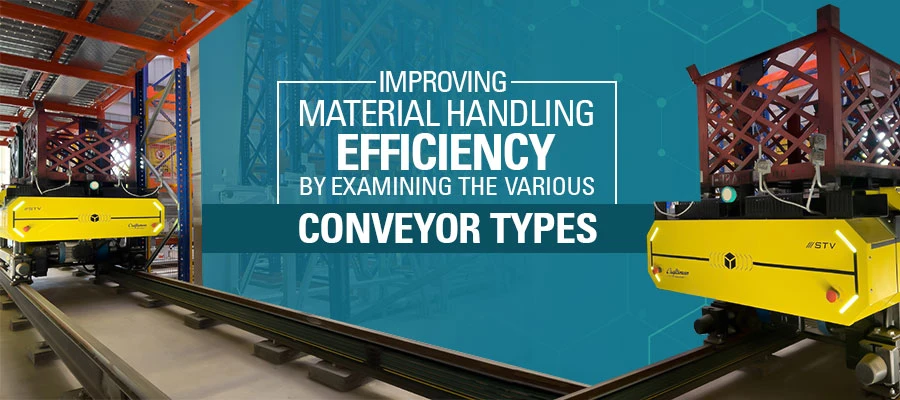Harnessing Efficiency: Warehouse Automation in the Solar Energy Revolution
In today's rapidly advancing world, the solar energy sector stands at the forefront of sustainable innovation.
Read More
Conveyors are essential in the field of material handling and logistics for effectively transferring things from one location inside a facility to another. Numerous benefits of conveyors include increased output, lower personnel costs, enhanced workflow, and improved safety. But not every conveyor is the same. Conveyors come in many different varieties, each created to address a particular need for material handling. In this article, we'll examine some of the most popular conveyor kinds, their distinctive characteristics, and their uses.
1. Belt Conveyors: Probably the most well-known type of conveyor is the belt conveyor. They enable the movement of diverse materials, including bulk and unit loads, by moving a continuous belt along a set of pulleys. Belt conveyors can be utilised in a variety of sectors, including manufacturing, mining, food processing, and logistics.
2. Roller Conveyors: Another well-liked option for material handling is the roller conveyor. They move objects via a system of rollers, as the name would imply. Depending on the particular use, these conveyors can be customised with different roller diameters, spacings, and materials to handle big loads.
3. Gravity Conveyors: Gravity conveyors use gravity's pull to carry objects down a slope. These conveyors are primarily utilised for short-distance transportation of light or small objects. Gravity conveyors are affordable, simple to build, and low maintenance.
4. Screw Conveyors: Screw conveyors rotate a helical screw inside a tube or trough to transfer bulk items. They are frequently employed in sectors like construction, agriculture, and wastewater treatment. Screw conveyors are effective at moving a variety of materials, such as sludge, powders, and grains.
5. Chain Conveyors: Chain conveyors move goods via a network of connected sprockets using chains. These conveyors can withstand hostile environments, handle high loads, and are sturdy. In assembly lines, warehouses, and the manufacturing of automobiles, chain conveyors are frequently employed.
6. Pneumatic Conveyors: Pneumatic conveyors move goods through ducts or tubes that are contained by air pressure. In applications where cleanliness and dust control are crucial, such as the food and pharmaceutical industries, they are especially helpful for processing fine powders or granular materials.
Concluding, conveyors are a crucial component of contemporary material handling systems, providing dependable and effective transportation options. Businesses can improve their Material Handling procedures by having a thorough understanding of the many conveyor types that are available and their specialized applications. Choosing the appropriate conveyor type can streamline operations, increase productivity, and improve overall efficiency in a variety of industries, whether it be belt conveyors for large-scale operations, gravity conveyors for lightweight products, or pneumatic conveyors for delicate commodities. Businesses can increase the efficiency of their material handling by utilizing the power of conveyors.
Advantages of Using Our Conveyor Systems:
Low-noise operation
Low maintenance
Suited for cold storage
High reliability
Standardized spare parts